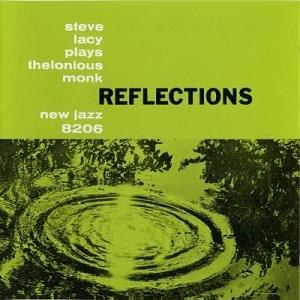Mal Waldron & Steve Lacy – Live at Dreher, Paris 1981 HatHut hatOLOGY 4-596 (2003)
This collection of two archival live recordings — Live at Dreher Paris 1981: Round Midnight, Vol. 1 and Live at Dreher Paris 1981: The Peak, Vol. 2 (both originally released in 1996) — features two long-time collaborators engaged in a great, public musical conversation. The album is just Lacy and Waldron, playing some originals but mostly Thelonious Monk tunes. The mood is a supportive one. Each performer gets some time out front, or by himself, with plenty of collaborative passages as well. Waldron plays with a blues tonality but also with blocks of repetitive riffs that lend a subtly hypnotic and thoroughly modern edge (the liner notes call this a hypnotic tension & release quality), which is confirmed by playing with sustain just enough to soften the rhythmic attack on his piano but never so much as to devolve into wispy sentimentality. Lacy plays lyrically and brightly when he wants to, then at times with tangly solos that sometimes reach for “extended technique” honks and screeches, always maintaining a humility that belies the virtuoso technique. While Waldron tends to synthesize disparate stylistic approaches, Lacy tends to alternate between them. Both players are clearly “inside” the Monk songs, enough that these versions sound nothing like they way Monk recorded them yet also evidence tremendous admiration — the kind that posits true admiration as adding something to the songs and growing them into unique performances rather than timidly deferential museum piece recreations. It is also music that finds few limits, pushing beyond the confines of formal structure while also making full and deft use of harmonic and rhythmic structure to develop themes that are long and deep. If these recordings leave any particular impression, it is of two familiar collaborators who anticipated playing mostly Monk songs, and doing so in a mutually advantageous way, but with few if any preconceived ideas about how they would musically implement their performances. So the listener gets to experience the performers offering up points and counterpoints, building up a rapport, all with full awareness of the audience for their performances. It is kind of a more intellectual and cerebral version of the same kind of feeling that drives the “feel good” vibes of everything from rock “jam band” music to reggae…you name it.


